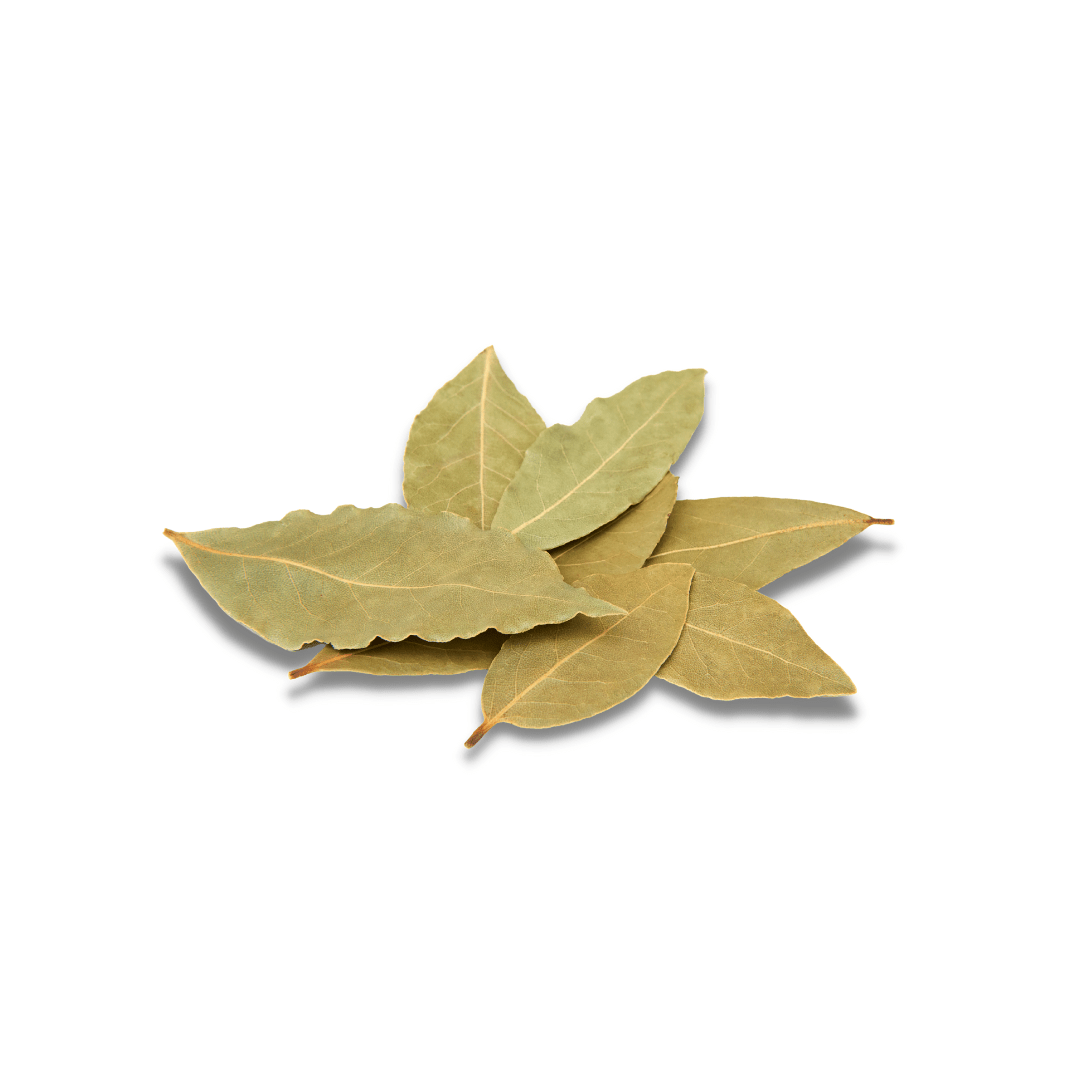About
Bay leaves are a type of aromatic leaves commonly used in cooking for their distinct flavor and fragrance. They are harvested from the bay laurel tree and are commonly sold dried.
Health Benefits of Bay Leaves:
-
Anti-inflammatory properties – Bay leaves contain compounds that have anti-inflammatory properties, which may help reduce inflammation in the body.
-
Digestive health – Bay leaves may help improve digestion by increasing digestive enzymes and reducing symptoms of digestive issues such as bloating and constipation.
-
Antioxidant properties – Bay leaves contain antioxidants that may help protect against cell damage and lower the risk of chronic diseases such as cancer and heart disease.
-
Diabetes management – Bay leaves have been shown to help regulate blood sugar levels, which may be beneficial for people with diabetes.
-
Respiratory health – Bay leaves may have a beneficial effect on respiratory health by helping to clear congestion and reduce inflammation in the respiratory tract.
List of diseases that can be cured by Bay Leaves:
While bay leaves may have health benefits, they are not a cure for any disease. They may be helpful in managing symptoms of certain conditions such as diabetes or respiratory issues, but should not be used as a replacement for medical treatment.
Macronutrients per 50-gram serving of Bay Leaves
| Nutrient | Amount |
|---|---|
| Carbohydrates | 16.6 g |
| Protein | 2.5 g |
| Fat | 0.9 g |
| Fiber | 12.4 g |
| Water | 19.6 g |
Vitamins per 50-gram serving of Bay Leaves
| Vitamin | Amount |
|---|---|
| Vitamin A | 1329 IU |
| Vitamin B1 (Thiamin) | 0.2 mg |
| Vitamin B2 (Riboflavin) | 0.1 mg |
| Vitamin B3 (Niacin) | 2.7 mg |
| Vitamin B6 | 0.3 mg |
| Vitamin B12 | 0 mcg |
| Vitamin C | 5.3 mg |
| Vitamin D | 0 IU |
| Vitamin E | 0.5 mg |
| Vitamin K | 5.5 mcg |
| Folate | 165 mcg |
| Biotin | 0 mcg |
Minerals per 50-gram serving of Bay Leaves
| Mineral | Amount |
|---|---|
| Calcium | 834 mg |
| Iron | 23.6 mg |
| Iodine | 0 mcg |
| Zinc | 0.3 mg |
| Magnesium | 68.3 mg |
| Phosphorus | 47.3 mg |
| Potassium | 1630 mg |
| Sodium | 39.7 mg |
| Chloride | 49.4 mg |
| Copper | 0.4 mg |
| Chromium | 0 mcg |
| Fluoride | 0 mcg |
| Molybdenum | 0 mcg |
| Manganese | 2.6 mg |
| Selenium | 0.4 mcg |
What are bay leaves?
Bay leaves are aromatic leaves from the bay laurel tree that are used as a spice in cooking.
How do you use bay leaves in cooking?
Bay leaves are typically used to flavor soups, stews, sauces, and marinades. They are added to the dish during cooking and removed before serving.
Where can I buy bay leaves?
Bay leaves can be found in most grocery stores, spice shops, or online retailers specializing in herbs and spices.
How long do bay leaves last?
When stored in an airtight container in a cool, dark place, bay leaves can last for up to two years.
Are bay leaves safe to eat?
Bay leaves are not typically consumed as they can be sharp and uncomfortable. They are used primarily for flavoring and are removed before eating.
Do bay leaves have any health benefits?
Bay leaves have been associated with various health benefits, including anti-inflammatory and antioxidant properties.
Can bay leaves be used in vegetarian dishes?
Yes, bay leaves can be used in vegetarian dishes to enhance the flavor and add depth to the overall taste.



